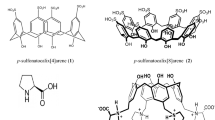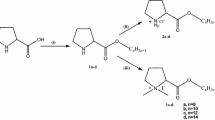Abstract
Activity and stability of an alkaline lipase fromPenicillium cyclopium var.album (PG 37) were studied in surfactant and detergent solutions. Three anionic surfactants [Na salts of C12SO4 − (sodium dodecyl sulfate), C12ØSO3/− (linear alkyl benzene sulfonate), and C11COO− (laurate)] and four homologous series of nonionic surfactants of C12–15 polyoxethylenated fatty alcohols (AEO3, AEO5, AEO7, and AEO9) were evaluated. At a concentration range of 3.2–40 μM, sodium dodecyl sulfate and laurate stimulated the activity of PG 37 lipase. At concentrations greater than 5.6 μM, linear alkylbenzene sulfonate inhibited PG 37 lipase activity. Nonionic surfactants, AEO5 and AEO7, in the concentration range of 0.25–20 mM, enhanced and stabilized the activity of PG 37 lipase. The presence of PG 37 lipase in detergent formulaton improved detergency ∼20%. The mechanism of inhibition of the lipolytic activity of PG 37 lipase is proposed to be partly due to the formation of inactive (BR)n-E complex between the hydrophobic moiety of the surfactants and the surface of the lipase. Conversely, formation of a soluble (RB)n-E complex between the hydrophilic group of the surfactant and lipase may account for the increased lipolytic activity of PG 37 lipase.
Similar content being viewed by others
References
Kawase, T., T. Hashimoto, T. Fujii, and M. Minagawa,J. Jpn. Oil Chem. Soc. (Yukagaku), 34:22 (1985).
Mozaffar, Z., J.D. Weete, and R. Dute,J. Am. Oil Chem. Soc. 71:75 (1994).
Falbe J.,Surfactants in Consumer Products: Theory, Technology, and Application. Springer-Verlag, New York, 19897, p. 218.
Attwood, D., and A.T. Florence,Surfactant Systems: Their Chemistry, Pharmacy, and Biology, Chapman and Hall, New York, 1983, pp. 630–631.
Andree, H., W.-R. Muller, and R.D. Schmid,J. Applied Biochem. 2:218 (1980).
Benzonana, G., and P. Desnuelle,Biochim. Biophys. Acta 164:47 (1968).
Brockerhoff, H.,Ibid. 159:296 (1968).
Shkahani K.M., Lipases and Esterases, inEnzymes in Food Processing, edited by Gerald Reed, Academic Press, New York, 1975, pp. 181–217.
Schandi, A., and T. Pittner,Eur. J. Biochem. 140:547 (1984).
Khan, I.M., C.W. Dill, R.C. Chandan, and K.M. Shahani,Biochim. Biophys. Acta 132:68 (1967).
Iwai, M., Y. Tsujisaka, and J. Fukumoto,J. Gen. Appl. Microbiol. 16:81 (1970).
Grime, J.K., Laundry Technology Trends in the Americas, inProceedings of the World Conference on Detergents: Global Perspectives, edited by Arno Cahn, AOCS Press, Champaign, 1994, pp. 64–70.
Gormsen, E., P. Rosholm, and M. Lykke Enzymes for Laundry Products, inIbid., pp. 198–203.
Author information
Authors and Affiliations
About this article
Cite this article
Xia, J., Chen, X. & Nnanna, I.A. Activity and stability ofPenicillium cyclopium lipase in surfactant and detergent solutions. J Am Oil Chem Soc 73, 115–120 (1996). https://doi.org/10.1007/BF02523457
Received:
Accepted:
Issue Date:
DOI: https://doi.org/10.1007/BF02523457




